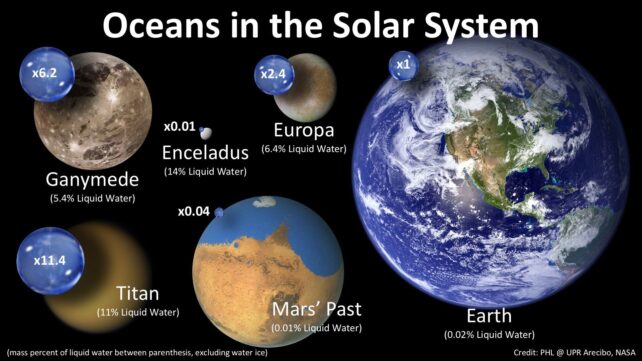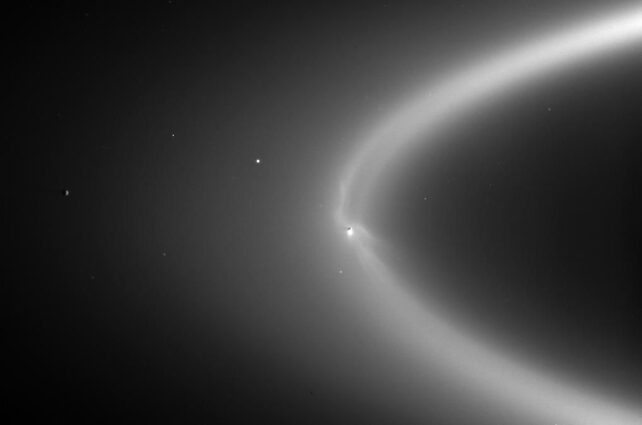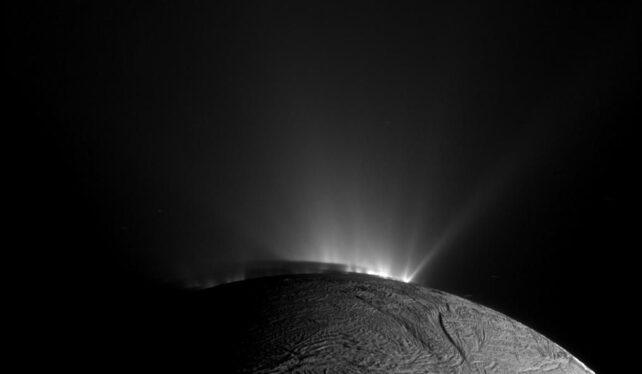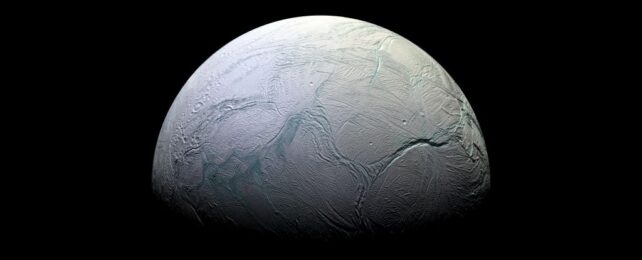For the first time, phosphates have been detected in an alien ocean. Found on Saturn's moon Enceladus, the discovery raises the possibility that life could exist on the tiny frozen satellite.
Compounds containing phosphorous were identified in vapor spewed out by Saturn's ocean moon Enceladus – the Solar System body with the largest ratio of liquid water by mass – by an international team led by planetary scientist Frank Postberg of the Free University of Berlin in Germany. The amounts found suggest there could be abundances more than 100 times higher than we have here on Earth.
This means we have a new clue for understanding ocean worlds in the Solar System and beyond. And since phosphorus is one of the six elements considered critically crucial for life based on water and organic chemistry, its discovery significantly raises the prospects for life on Enceladus.
"Phosphorus is an element essential for planetary habitability, but to date, it has not been detected in an ocean beyond Earth. Previous geochemical modeling suggested that phosphate might be scarce in the ocean of Enceladus and other icy ocean worlds," the researchers write in their paper.
"In this work, we present CDA mass spectra of a population of E-ring ice grains that show the presence of sodium phosphates. We then perform laboratory analog experiments to quantitatively establish that Enceladus's ocean is rich in dissolved phosphate."

Enceladus, just a seventh the size of Earth's Moon, may not look like much at first glance, but a lot is going on beneath its frozen exterior. When Saturn probe Cassini first detected geysers erupting from Enceladus, it revealed the presence of a global ocean, kept liquid by the heat created by the constant push-pull of the moon's gravitational interaction with Saturn.
Saturn, and by extension, Enceladus, are far from the life-nurturing warmth of the Sun, on which the vast majority of Earth's food webs rely. But here on Earth, in the very dark, cold regions of the deep sea, where the Sun's rays don't penetrate, food webs that rely on chemistry thrive around heat vents in the ocean floor.
Such might also be the case for Enceladus, but it's not like we can just nip on over and send a submarine below the at least 20-kilometer-thick (12 miles) ice crust to have a little peek.
Luckily, Enceladus is a messy wee beastie. Those geysers are an active, ongoing feature; in fact, they create and maintain Saturn's second-outermost E ring, a fuzzy torus of material that's mostly microscopic particles of water ice, in which Enceladus is cozily ensconced.
And Cassini, before its dramatic final death plunge into the clouds of Saturn at the end of 2017, sampled that ring, collecting the light shimmering off the ice.

In the intricacies of that light, details about chemistry can be discerned. Elements and compounds absorb certain wavelengths and re-emit at others; by splitting the light into a rainbow and looking for bright and dim sections, scientists can determine which chemicals are present, like a chemical fingerprint.
Postberg and his colleagues did this, taking data from Cassini's Cosmic Dust Analyzer instrument and conducting a comprehensive analysis of 345 particles. On nine of those particles, they identified spectral features they found to be unique to sodium phosphate – a compound of sodium and phosphorus.
Next, they conducted an experiment to try and replicate the spectrum, firing a laser at a beam of water in which sodium orthophosphate and disodium hydrogen phosphate had been dissolved. They were able to reproduce the chemical fingerprint they found in the ice grains of the E ring. And the abundance of these elements required to reproduce the spectrum suggests a high abundance of sodium in Enceladus's ocean.

"The CDA detection of ice grains with high concentrations of orthophosphates indicates that phosphorus is readily available at the top of Enceladus's ocean (that is, the plume source region)," the researchers write. "Even with a conservative margin, our estimate indicates concentrations in the order of at least hundreds of micromolar, several 100-fold the average phosphate abundance in Earth's oceans."
So where is the phosphorus coming from? Beneath its sloshy liquid ocean, Enceladus is thought to have a core composed of a type of rock called carbonaceous chondritic rock. The team conducted experiments in that direction and found that phosphorus is an unavoidable product of the interaction between alkaline and carbonate-rich ocean water and this rock.
So not only is phosphorus likely abundant on Enceladus, there's a plausible source for it, too.
The other five of the six critical elements – carbon, hydrogen, nitrogen, oxygen, and sulfur – had already been identified in emissions from Enceladus, although the sulfur detection is tentative.
Still, as Postberg told the Europlanet Science Congress last year, "Enceladus now satisfies what is generally considered one of the strictest requirements for habitability."
So can we go there? Pleeeeeaaaase?
The team's research has been published in Nature.
